Costa Mesa Self Storage: A Complete Guide
If the thought of renting a moving truck, loading it up, driving to a facility, and then unloading everything sounds completely exhausting, you’re not alone. For years, that was the standard process for getting your things into storage. It’s a time-consuming, back-breaking chore that involves handling all your belongings multiple times. But what if there was a better way? The world of Costa Mesa self storage has evolved, offering smarter solutions that work for you, not the other way around. This article explores how modern options, like portable storage, can eliminate the truck rental and the double-handling, saving you time, energy, and a major headache.
- Save 50% on move-in
- No truck rental
- Ground level

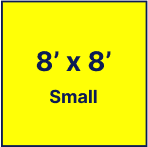
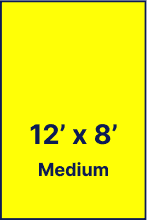

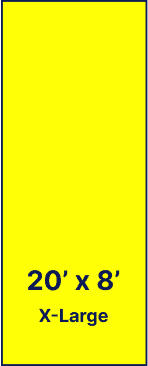





- Save 50% on move-in
- No truck rental
- Ground level
Box-n-Go Portable Storage Unit Sizes

Key Takeaways
- Plan Your Space to Save Money: Before renting, make a quick list of what you’re storing. This helps you choose the right-sized unit and avoid paying for empty space or features like climate control that you might not need.
- Choose a Storage Method That Comes to You: Skip the hassle of renting a truck and handling your items multiple times. Portable storage delivers a container to your door, letting you pack once on your own schedule for a much simpler moving experience.
- Prioritize Facilities with Comprehensive Security: A secure lock is just the start. Look for essential features like 24/7 video surveillance, controlled gate access, and indoor placement to protect your belongings from theft and weather damage.
Why Use Self-Storage in Costa Mesa?
Life in Costa Mesa is dynamic, and sometimes you just need a little extra space. Whether you’re moving to a new apartment in Mesa Verde, decluttering your home near South Coast Plaza, or managing inventory for your local business, self-storage can be a lifesaver. The reasons people look for self storage in Costa Mesa are as varied as the people themselves. You might be renovating your house, heading off to college, or simply trying to reclaim your garage from seasonal decorations and sports equipment.
Whatever your reason, finding the right storage solution can make a huge difference. It’s not just about stashing your stuff; it’s about finding a secure, convenient, and stress-free way to manage your belongings. The best options give you flexibility and peace of mind, letting you focus on the more important things, like settling into your new home or growing your business. Think of it as an extension of your home—a place where your things are safe and accessible when you need them.

What to Consider Before You Rent
Before you start comparing prices, take a moment to think about what you actually need. What are you storing, and for how long? Are you storing delicate furniture that might need a climate-controlled environment, or just some sturdy boxes? Understanding your specific situation is the first step to finding the right fit. Just as storage facilities consider their target audience, you should think about what kind of service best matches your needs. Are you a busy professional who values convenience above all else, or a family on a tight budget during a move? Answering these questions will help you narrow down your options and avoid paying for features you don’t need.

The Perks of Portable Storage
If the thought of renting a moving truck, loading it up, driving to a storage facility, and then unloading everything sounds exhausting, you’re not alone. This is where portable storage completely changes the game. Instead of you going to the storage unit, the unit comes to you. Companies like Box-n-Go deliver a container right to your driveway. You can take your time loading it, and once you’re done, it’s picked up and taken to a secure facility. This approach eliminates the need to rent a truck or handle your belongings multiple times, saving you time, money, and a whole lot of back pain. It’s one of the most efficient self storage solutions available.
Why Ground-Level Access is a Game-Changer
Imagine carrying a heavy sofa up a ramp or navigating a narrow dolly down a long hallway. It’s not ideal. Ground-level access means you can load and unload your belongings directly without dealing with stairs, elevators, or ramps. When you use a portable storage container, everything is at ground level, making the process incredibly simple. You can walk right in and out, which is especially helpful for heavy or bulky items. This feature allows you to pack on your own schedule without the pressure of a truck rental deadline. It’s a small detail that makes a massive difference in your overall moving experience, turning a stressful task into a manageable one.
What Types of Storage Units Can You Rent?
When you picture a storage unit, you might think of a simple garage-like space. But the world of self-storage offers a lot more variety to fit different needs. Whether you’re storing household furniture, a classic car, or business inventory, there’s a specific type of unit designed to protect your belongings. Understanding your options is the first step to finding the right fit.
The main differences come down to features like climate control, size, and accessibility. Some facilities are built to handle large vehicles, while others specialize in secure document storage for businesses. And then there are portable storage containers, which bring the unit directly to you, cutting out the need to rent a moving truck. Thinking about what you plan to store will help you narrow down the choices and find a solution that works for you, not the other way around.

Climate-Controlled vs. Standard Units
One of the biggest decisions you’ll make is whether you need a climate-controlled unit. These units maintain a consistent temperature and humidity level, which is crucial for protecting sensitive items from extreme heat, cold, or moisture. Think of things like wooden furniture that can warp, electronics that can be damaged by condensation, or important documents and photos that can degrade over time. If you’re storing anything valuable or sentimental, climate control offers peace of mind.
Standard units, on the other hand, are more like a garage. They protect your belongings from the elements but don’t regulate the internal environment. They are a great, cost-effective option for sturdy items like garden tools, patio furniture, or boxes of non-perishable goods that aren’t affected by temperature swings.
Storing Your Car, RV, or Boat
If your garage or driveway is overflowing, a storage unit can be a perfect solution for your extra vehicles. Many facilities offer dedicated spaces for cars, motorcycles, RVs, and boats. This is a popular choice for protecting a classic car from the elements, storing a boat during the off-season, or simply complying with neighborhood parking rules. These spaces can range from a simple outdoor parking spot to a fully enclosed, private unit that offers the same protection as a personal garage. Before you commit, make sure you prepare your vehicle for long-term storage to keep it in top shape.
Storage Solutions for Your Business
Businesses often need extra space, and self-storage is a flexible and affordable way to get it. Instead of leasing a larger office or warehouse, you can rent a unit to store excess inventory, archived documents, equipment, or seasonal marketing materials. Some facilities are specifically designed to cater to commercial clients with features like extended access hours and delivery acceptance. For ultimate convenience, portable storage for businesses allows you to have a container delivered directly to your location. You can load inventory or files at your own pace without ever leaving your workplace.

How to Choose the Right Storage Unit Size
Picking a storage unit is a bit like the story of Goldilocks—you don’t want one that’s too big or too small. You want the one that’s just right. Choosing a unit that’s too large means you’re paying for empty air, while cramming everything into a unit that’s too small is a recipe for stress and potential damage to your belongings. Getting the size right from the start saves you time, money, and a major headache.
The key is to match the unit size to the volume of your items. Most storage needs fall into three main categories: small, medium, and large. Each is designed for a specific scenario, from storing a few seasonal boxes to holding the contents of an entire family home. Let’s walk through what fits in each size so you can confidently choose the perfect space for your things.
Small Units: For a Few Boxes or a Dorm Room
Think of this as your home’s extra closet. Small storage units are perfect when you just need a little more breathing room. They’re ideal for storing seasonal items like holiday decorations or winter gear, a few boxes of documents, or the contents of a college dorm room over the summer. You can typically fit a small mattress, a desk, and several boxes inside. If you’re looking to declutter a single room or store overflow from your apartment, a small unit is an efficient and affordable solution.
Medium Units: For a One- or Two-Bedroom Apartment
This is one of the most popular sizes, and for good reason. Medium units are the workhorse of the storage world, built to handle the contents of a one- or two-bedroom apartment. They can comfortably accommodate larger furniture like a sofa, queen-sized bed, and dining room table, plus major appliances and plenty of boxes. If you’re in the middle of a move, undergoing a home renovation, or need to store the entire contents of an apartment, a medium unit gives you the space you need without feeling overwhelmed.

Large Units: For a Whole House
When you’re dealing with a whole-house move, a large unit is your best friend. These spacious units are designed to hold the contents of an entire house, making them the go-to choice for families who are moving, downsizing, or need long-term storage for a significant amount of furniture and belongings. You’ll have plenty of room for multiple bedroom sets, living and dining room furniture, garage items, and all the boxes that come with them. This size ensures you can keep everything together in one secure place.
Tips for Picking the Perfect Size
Choosing the right size can feel like a guessing game, but a little planning goes a long way. First, make a quick inventory of everything you plan to store. This helps you visualize the total volume. Next, think about how often you’ll need to access your things. If you need to grab items regularly, you’ll want to leave an aisle for easy movement. It’s always a good idea to choose a size that gives you a little extra wiggle room for future additions. One of the biggest pain points of self storage is trying to guess the right size at a facility, but having a container delivered to you lets you see exactly how your items fit before it ever leaves your driveway.
What Security Features Should You Look For?
When you’re trusting a company with your belongings, security should be at the top of your checklist. After all, you’re storing these items for a reason—they have value, whether sentimental or monetary. A storage facility isn’t just a space; it’s a promise to keep your things safe. Before you commit, it’s smart to ask about the specific measures in place. Think of it like vetting a new home for your possessions. You’ll want to look for a combination of modern technology, controlled access, and protection from the unexpected. A truly secure facility will have multiple layers of defense, giving you confidence that your items are in good hands from the moment you lock the door.

Modern Surveillance and Alarms
A good storage facility takes security seriously, and that starts with a great set of eyes. Look for places that use modern surveillance systems and alarms to monitor the property around the clock. Cameras in key areas like entrances, exits, and hallways act as a major deterrent to potential theft and provide a record of all activity. When your items are stored in a large, indoor warehouse rather than a sprawling complex of outdoor units, surveillance is often more effective and comprehensive. An alarm system adds another critical layer of protection, ensuring that any unauthorized entry attempt is immediately addressed. This constant vigilance is what gives you true peace of mind.
Secure Gate and Unit Access
Knowing that only authorized people can get near your belongings is fundamental. Most facilities have controlled access points, like electronic gates that require a personal code. This is a good first line of defense. However, security is even better when your individual unit is located inside a secure building. This creates a two-step security process: access to the property and access to the building itself. With portable storage, your container is locked by you and then stored inside a protected warehouse, which is inaccessible to the general public. This system drastically limits foot traffic and ensures only staff can get near the storage containers, adding a significant level of security.
Store on your driveway or inside our secure facility. Load/unload only once. Ground level access.
Protection from Fire and Weather
Security isn’t just about preventing theft; it’s also about protecting your items from environmental damage. Costa Mesa’s sun and occasional rain can take a toll on items left in traditional outdoor units. It’s important to ask what a facility does to guard against fire, water damage, and pests. An indoor warehouse setting naturally offers superior protection from the elements. Look for facilities with built-in fire prevention measures like sprinkler systems. Storing your container indoors keeps it out of the direct sun and rain, preventing issues like rust, mildew, and heat damage that can occur in units with roll-up metal doors exposed to the outdoors.

Do You Need Storage Insurance?
Even with the best security features, the unexpected can happen. That’s why it’s always a good idea to have insurance for your stored belongings. First, check your existing homeowner’s or renter’s insurance policy, as it might already cover items kept in storage. If it doesn’t, ask the storage company about the plans they offer. Many facilities provide affordable tenant insurance options that protect you against events like fire, water damage, or theft. Think of it as the final layer of security for your valuables. It’s a small price to pay for the confidence that you’re covered, no matter what.
How Much Does Storage Cost?
Let’s talk about the numbers. The cost of a storage unit in Costa Mesa can vary quite a bit, depending on what you need. Factors like the unit’s size, special features like climate control, and the facility’s location all play a role in the final price tag. While it’s tough to give a single number, understanding the different parts of the bill will help you find a solution that fits your budget without any surprises. Think of it less as a fixed price and more as a menu of options where you can pick what works best for you.
What to Expect for Monthly Rent
The biggest part of your storage bill will be the monthly rent. In a place like Costa Mesa, you’ll find a wide range of choices, from small 5×5 units perfect for a few boxes to large 10×30 units that can hold the contents of an entire house. Many facilities offer specialized options like climate-controlled storage to protect sensitive items from temperature swings. The more space and features you need, the higher the monthly rent will be. It’s a good idea to have a clear inventory of what you plan to store so you don’t end up paying for space you don’t use.

Watch Out for Hidden Fees
Here’s a heads-up: the monthly rent isn’t always the full story. Some storage companies have one-time fees that can catch you off guard if you aren’t looking for them. For example, it’s common to see a one-time administration fee, which can be around $29, just for setting up your account. Always ask the manager for a complete list of potential charges before you sign a contract. This includes any security deposits, insurance requirements, or fees for locks. Knowing these costs upfront helps you compare your options accurately.
Finding Flexible Rental Terms
The good news is that the storage industry has become incredibly flexible. Gone are the days of being locked into a long, rigid contract. Most facilities in Costa Mesa offer month-to-month rentals, which is perfect if you’re in the middle of a move or aren’t sure how long you’ll need the space. This flexibility means you can rent a unit for exactly as long as you need it without any penalty. Plus, many companies now let you reserve a storage unit online, making the whole process much more convenient.
- Call or order online in minutes
- We deliver storage to you
- Pack at home, at your convinience
- Store on your property or at indoor facility
- Move locally or nationwide
- Call or order online in minutes
- We deliver 16′ and 20′ storage to you
- Pack at home, loading labor available
- Store on your property
- Secured Extra Space
How to Save Money on Storage
If you’re looking to keep costs down, there are definitely ways to save. Keep an eye out for move-in specials, as many places offer promotions like getting your first month’s rent for just $1. These deals can significantly lower your initial out-of-pocket cost. Another great strategy is to ask about discounts for prepaying for a few months in advance. Don’t be shy about calling different facilities and asking directly what promotions they have running. A few phone calls can often lead to substantial savings.

How to Maximize Your Storage Space
Getting the most out of your storage unit isn’t just about fitting more stuff in; it’s about making your life easier. A well-organized unit means you can find what you need without unpacking everything, and it helps protect your belongings from damage. Plus, using your space efficiently might even let you rent a smaller, more affordable unit. It all starts before you even load the first box. When a portable storage container is delivered right to your home, you have the time and space to plan your packing strategy without the pressure of a rental truck ticking away on the clock. This approach lets you think through how you’ll arrange everything for easy access later on. A little planning goes a long way in turning a stressful task into a manageable project.
Pack Smarter, Not Harder
The key to a great storage experience begins with how you pack your boxes. Use sturdy, uniform-sized boxes whenever possible—they are much easier to stack securely than a random assortment of containers. Clearly label every box on multiple sides with its contents and the room it belongs to. This simple step will save you a massive headache later. For larger items, disassemble furniture like tables and bed frames to save a surprising amount of space. Keep all the screws and small hardware together in a labeled bag and tape it securely to the main furniture piece. This thoughtful approach to packing ensures your items are not only compact but also protected and easy to identify when you need them.

20’ Container – all weather.
Perfect for 3-bedroom residence.
5-7 rooms, furniture, appliances, etc.
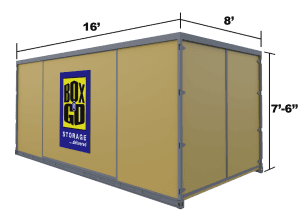
16’ Container – all weather.
Perfect for 2-bedroom residence.
3-5 rooms, furniture, appliances, etc.
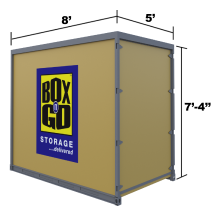
8’ Container – all weather.
Modular – works for any need.
Each fits 1-1.5 rooms.
Organize Your Unit Like a Pro
Think of organizing your storage unit like a game of Tetris with a built-in walkway. Start by placing your largest and heaviest items at the back and along the sides. Distribute the weight evenly to create a stable base. As you stack boxes, keep the heavier ones on the bottom and lighter ones on top to prevent crushing. The most important tip is to leave a clear aisle down the center of your unit. This gives you a path to access items in the back without having to move everything in the front. And speaking of the front, that’s where you should place boxes with items you might need to retrieve frequently.

The Moving Supplies You Actually Need
Showing up on moving day without the right supplies is a recipe for frustration. Before you start, gather everything you’ll need to pack efficiently and safely. This includes more than just boxes. You’ll want strong packing tape, permanent markers for labeling, and protective materials like bubble wrap or packing paper for fragile items. Don’t forget a sturdy lock to secure your unit—it’s your last line of defense. While some storage facilities sell these items, you can often save time and money by purchasing your moving and packing supplies in advance. Having everything on hand lets you focus on the task without making extra trips to the store.
Load Your Unit the Right Way
How you load your unit determines how easy it will be to use. Start by creating a wall of your heaviest, sturdiest items like dressers and appliances along the back wall. Continue loading heavy items along the sides, using them to build a solid foundation. Fill in the gaps with your boxes, making sure to utilize vertical space by stacking them high and tight, but safely. Place fragile items in secure spots where they won’t get bumped or crushed. Finally, put things you might need soon, like seasonal decorations or important documents, right at the front for easy access. With a ground-level unit, you can walk right in, making this process much simpler than navigating stairs or elevators.
What to Know About Location and Access
Finding the right storage unit isn’t just about size and price; it’s also about how easily you can get to your stuff. The location of a facility and its access policies can make a huge difference in your storage experience. Think about how often you’ll need to visit your unit and what your schedule looks like. A conveniently located facility with flexible hours can save you a lot of headaches, while the type of unit access can save your back during loading and unloading. Let’s break down what you need to consider.

Checking Access Hours and Policies
Before you sign a rental agreement, make sure you understand the facility’s access hours. Most traditional storage places in Costa Mesa have set gate hours, often something like 6:00 AM to 7:45 PM. While that works for many people, it can be a real problem if you have a demanding schedule or need to grab something late at night. Always ask about holiday hours and any rules about how often you can visit. If their schedule doesn’t line up with yours, you might want to explore more flexible options that bring the storage directly to you.
The Convenience of Ground-Level Units
If you’ve ever hauled a heavy sofa up a flight of stairs, you already know the value of ground-level access. Many facilities offer ground-level units, which allow you to park your car or truck right next to the door for easier loading and unloading. This is a major perk that reduces physical strain and cuts down on the time it takes to move your belongings. When you’re comparing options, always ask if ground-level or drive-up units are available. It’s a simple feature that makes the entire moving process feel much more manageable.
Drive-Up vs. Portable Storage
A traditional drive-up unit is convenient, but you still have to do all the driving. This usually means renting a truck, loading it at your home, driving to the facility, and then unloading everything into your unit. It’s a lot of double handling. This is where portable storage changes the game. A company like Box-n-Go delivers a storage container right to your doorstep. You load it once, on your own time, and then it’s picked up and taken to a secure facility. This approach eliminates the truck rental and the exhausting process of loading and unloading multiple times.

How Mobile Storage Simplifies Everything
Mobile storage is designed for efficiency. By having a container delivered to you, you can cut down on handling your items by as much as 50%. You pack directly into the unit, which means less work and a lower risk of damaging your belongings during transit. Once it’s packed, the container is transported for you. This method combines the security of a traditional facility with the convenience of at-home packing, giving you a hassle-free self-storage option in Costa Mesa. It’s a smart solution for anyone who values their time and wants to make moving and storing as simple as possible.
Keeping Your Belongings Safe: Rules and Tips
Once you’ve packed your boxes and picked your unit, the final step is making sure everything stays in top condition while it’s stored. Keeping your belongings safe goes beyond just a good lock. It involves understanding your storage environment, organizing your unit thoughtfully, and knowing the facility’s rules. A little preparation can make a huge difference in preserving your things, whether you’re storing them for a month or a year. These simple tips will help you protect your items and give you peace of mind.
We deliver the best storage solutions. No gimmicks:
- No truck to rent. We deliver storage to you!
- Load/Unload only once.
- Pay only for space you use.
- Secure, climate-friendly facility.
- Drive-up access
No Truck to rent…EVER!
- Save money and time.
- Reduce the risk of accidents and injuries.
- No need to pay for gas, insurance & mileage!
Load ONCE Storage Solution!
- You only need to load your belongings once!
- No need to load and unload it all again into a storage unit.
- All containers come with easy ground level access!
Pay Only for the Space You Use!
(if storing at our facility)
- No not need to guess on how much space you actually need.
- Order an extra 8’ x 5’ unit. Do not use it – do not pay for it.
Secure, Climate-Friendly Facility!
- Highest degree of security and protection.
- Our 8’ x 5’ units are breatheable – no mold or mildew.
- No funky smell when your belongings return.
EASY Drive-Up Access!
(if storing at our facility)
- Access your units at ground level.
- No elevators, ramps, stairs to climb.
- Schedule access appointment & drive straight to your units.
The Real Benefits of Climate Control
You’ve probably heard the term “climate-controlled storage,” but what does it actually mean? It’s more than just air conditioning. These units maintain a consistent temperature and humidity level year-round, which is a huge deal for certain items. Extreme heat, cold, or moisture can damage things like wooden furniture, electronics, artwork, and important documents. Climate-controlled storage is a smart way to protect sensitive belongings from warping, cracking, or growing mold. If you’re storing anything valuable, sentimental, or irreplaceable, investing in a climate-controlled unit is one of the best ways to ensure it comes out looking just as good as it did going in.

Simple Unit Maintenance
A great storage facility does its part to keep the property secure and clean, but you also play a role in maintaining your own space. Look for facilities with features like gated entry, 24/7 video cameras, and an on-site manager—these are all signs of a well-kept property. Inside your own unit, a few simple habits can go a long way. Make sure your items are clean and completely dry before storing them to prevent mildew. It’s also a good idea to check on your unit periodically, especially if you’re storing long-term. This gives you a chance to make sure everything is still in order and that no issues have popped up.
Best Practices for Long-Term Storage
If you won’t be accessing your items often, a little planning will make your life much easier when you do. Before you load everything in, think about what you might need to grab later. You can store frequently needed items near the front of your unit for easy retrieval. Creating a small aisle down the center of the unit also gives you a path to reach things in the back without having to unpack everything. Labeling your boxes on multiple sides is another pro tip that saves you from having to guess what’s inside. A simple inventory list can also be a lifesaver, helping you remember exactly what you stored and where.
What You Can’t Keep in Your Unit
Every storage facility has a list of prohibited items, and these rules are in place for a good reason. Storing certain things can endanger your belongings as well as the items in surrounding units. Generally, you can’t store anything hazardous, flammable, or perishable. This includes things like gasoline, propane tanks, paint, fireworks, and food. Plants and animals are also not allowed. Before you start packing, it’s always a good idea to check your facility’s specific list of restrictions. Following these rules helps create a safe and secure environment for everyone who uses the storage property.

Related Articles
- Self Storage Guide in Costa Mesa – Box-n-Go
- Self Storage Units for Rent in Costa Mesa, Ca – Box-n-Go
- Guide to Self Storage in Costa Mesa, California – Box n Go Storage and Moving
Frequently Asked Questions
What’s the real difference between using a portable container and a traditional storage unit? The biggest difference comes down to convenience and labor. With a traditional unit, you’re responsible for the entire process: renting a truck, loading your belongings, driving to the facility, and then unloading everything into your unit. Portable storage flips that script. A container is delivered directly to you, so you can load it at your own pace, right at ground level. Once you’re done, the company picks it up and stores it for you, cutting the handling of your items in half.
How can I be sure my belongings are secure inside a portable container? This is a great question because security has multiple layers. First, you are the only one with a key to your lock. After you’ve packed and locked your container, it isn’t just left in a parking lot. It’s transported to a secure, indoor warehouse. Unlike traditional facilities with constant public traffic, access to this warehouse is restricted, which adds a significant level of protection against theft and vandalism.
Do I really need a climate-controlled unit in a place like Costa Mesa? While our weather is pretty mild, climate control is less about extreme temperatures and more about consistency. The humidity and temperature shifts from day to night can still affect sensitive items over time. Things like wooden furniture, musical instruments, electronics, and important documents can be damaged by moisture or subtle warping. If you’re storing anything valuable or sentimental, climate control is a smart investment for long-term peace of mind.
I’m worried about picking the wrong size. How do I get it right? Choosing the right size can feel like a guessing game, but it doesn’t have to be. The best first step is to make a quick list of the large items you plan to store. This gives you a much clearer picture of the space you’ll need. One of the best parts about using a portable container is that you can see exactly how your belongings fit as you load them, right in your own driveway. This takes the pressure off and ensures you have the right amount of space before the unit is even moved.
Besides the monthly rent, what other fees should I expect? It’s smart to look beyond the monthly rate. Some companies charge a one-time administrative fee when you first sign up, and you may also need to purchase a specific type of lock. Always ask for a complete breakdown of all potential costs before you commit. A reputable company will be transparent about everything, including delivery fees, insurance options, and any other charges, so you can budget accurately without any surprises.

